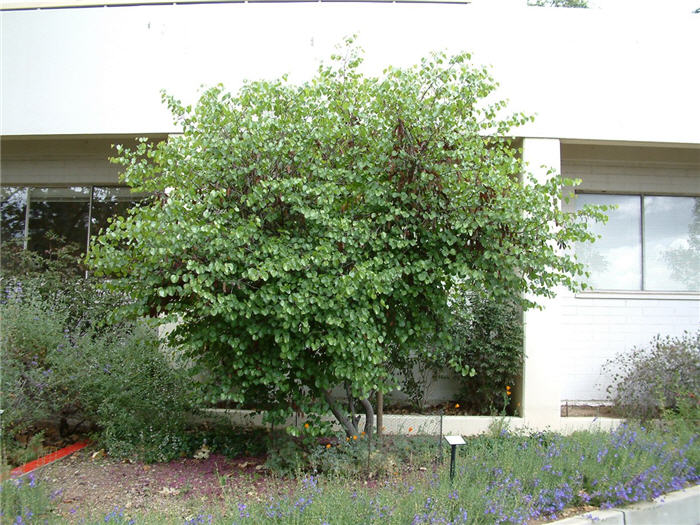| Botanical Name: Cercis occidentalis | |
| Common Name: Western Redbud |

-
Anatomy
-
Culture
-
Design
Plant Type
Tree, Shrub
Height Range
12-25'
Flower Color
Pink, Purple
Flower Season
Spring
Leaf Color
Green, Yellow Green
Bark Color
Grey
Fruit Color
Brown
Fruit Season
n/a
Sun
Full, Half
Water
Low, Extra in Summer
Growth Rate
Moderate
Soil Type
Sandy, Clay, Loam, Rocky, Unparticular
Soil Condition
Average, Rich, Poor, Well-drained, Dry
Soil pH
Neutral
Adverse Factors
Attracts Bees
Design Styles
English Cottage, Formal, Japanese, Meadow, Mediterranean, Ranch, Spanish, Woodland
Accenting Features
Fall Color, Multi-trunk Tree, Showy Flowers, Specimen
Seasonal Interest
Winter, Spring, Summer, Fall
Location Uses
Background, Shrub Border, Foundation, Parking Strip, Patio
Special Uses
Screen, Mass Planting, Small Spaces
Attracts Wildlife
Hummingbirds, Butterflies
Information by: Stephanie Duer
Photographer: Steve Mullany/Frommer
Photographer: Steve Mullany/Frommer
-
Description
-
Notes
This deciduous shrub or small tree reaches 10 to 15 feet tall and 10 to 12 feet wide. Beautiful magenta flowers appear in spring, before the leaves appear. Foliage is initally apple green, turning darker green during the summer, and then yellow in the fall. Seed pods dangle on this tree in winter. Western Redbud prefers full sun but will appreciate afternoon shade. It needs well draining soil. It is drought tolerant once it's established. It attracts hummingbirds and butterflies. A fabulous small tree for small spaces or patios.
Redbuds need well-draining soil; soggy soil will be their doom. More heat and drought tolerant than C. canadensis, though it may shed some leaves mid-summer as a drought response. Some die-out due to winter stress is inevitable; selectively prune out dead branches in late winter or early spring. Redbuds are available as either single-stem (sometimes called specimen or standards) or as a multistem, which is closer to its natural state of being and the form best suited for a natural look.